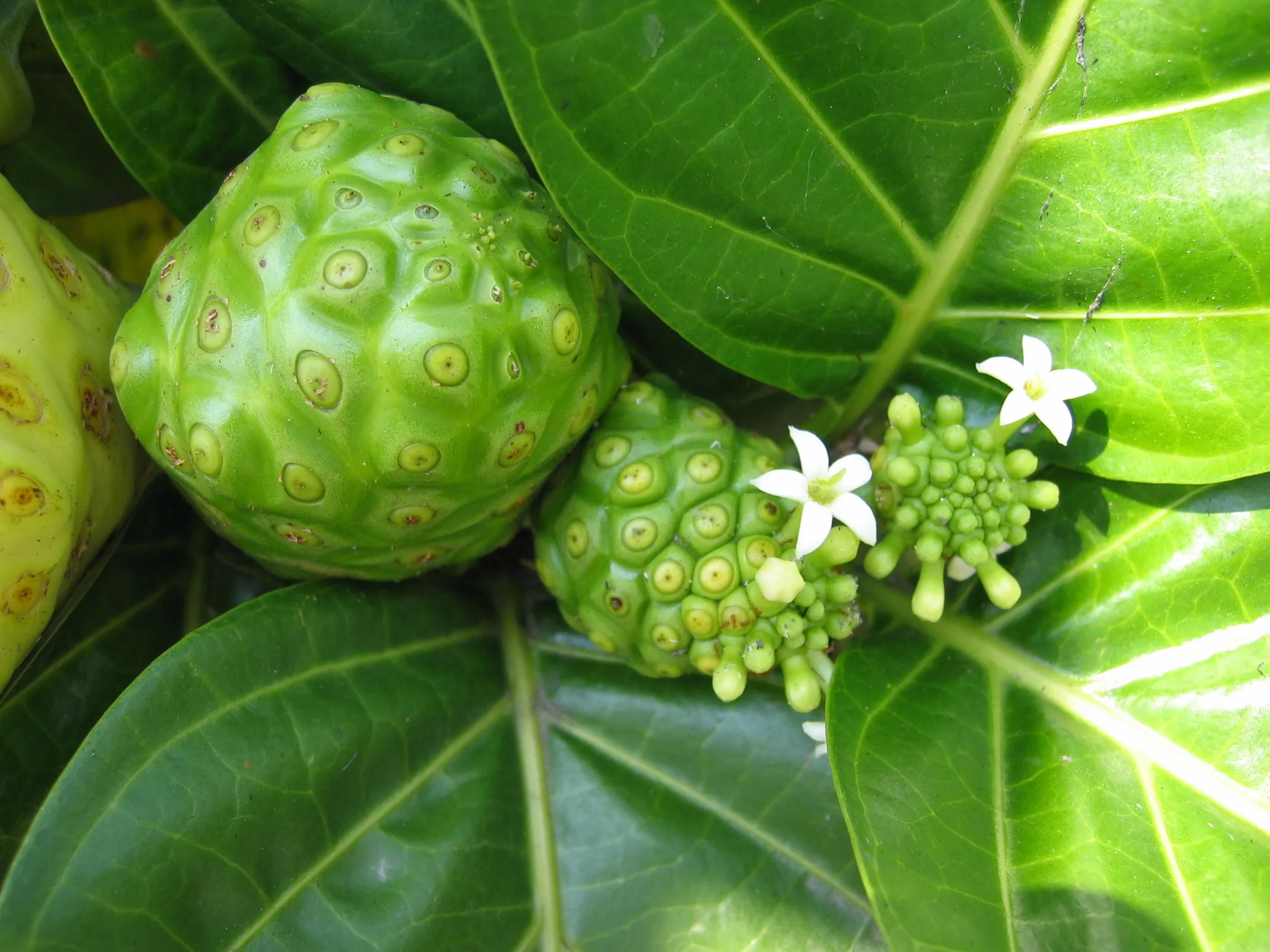The Indian Mulberry, commonly known as Noni (Morinda citrifolia), stands as a testament to nature’s remarkable medicinal bounty. This versatile plant, which made its journey from the Polynesian islands to Central America through Asian immigrants during the Panama Canal’s construction, has become a valuable addition to home gardens across the coastal regions. Known for its wide range of therapeutic properties—from treating skin conditions to addressing internal ailments—noni has garnered increasing attention in recent years as both a traditional remedy and a modern health supplement, despite its fruit’s notoriously unappealing odor.
Indian Mulberry (Noni) Morinda citrifolia
Geo-distribution: A native plant of the Polynesian islands, noni has been growing in our region for some time, after its introduction by Asian immigrants to Panama when the canal was being built. Since then, noni has been planted in home gardens in coastal regions of Central America for its medicinal benefits.
Botanical Description: Noni is a small evergreen shrub or tree, usually less than 3 meters tall, occasionally up to 6. It has glossy, evergreen leaves and yellowish-white, magnolia-like flowers. The oblong fruit is 10-15 centimeters long, with unusual scales on the surface of the fruit. It has an unappealing odor when ripe.
Medicinal Uses: Noni is a traditional Hawaiian medicinal plant used for a wide range of illnesses. The ripe fruit can be used as a poultice for facial blemishes, rubbed until the oil disappears, and also to draw out the pus and core from an infected sore or boil, such as from a staph infection. The young unripe fruit can be placed carefully on deep cuts. Reputedly, the fruit was used as a remedy against tuberculosis, arthritis, rheumatism and the changes of old age. The leaves and bark of the stem were pounded and strained, resulting in a liquid drunk as a tonic or for urinary disorders, muscle and joint pain, and the juice of the fruit was applied to the hair to rid it of head lice.
Preparation: Two recipes are known. The easiest consists of blending and straining the soft, ripened fruit with water and pineapple or citrus juice. Several shot glasses of the juice are taken daily, and the juice can be stored in the refrigerator. The second recipe follows: Fill a wide-mouthed glass jar with the fruit at its yellow stage and cap it tightly. Place the jar in a sunny spot and let it sit for several days, until the fruit turns to mush and the sun-cooked juices drain into the bottom of the jar. The juice can be strained into a smaller jar and refrigerated until used.
Notes: Because of its recent popularity as a natural health drink, noni fruit is now available in many local markets. The seeds can be collected and planted 2-3 cm deep in plastic nursery bags or containers with average soil. Keep them in the shade and well watered during the first month, until they sprout. Then move the seedlings into the light and water twice a week. The seedling trees can be planted in their permanent sites 3-6 months later. Noni trees have adapted well to our tropical soils, particularly in the coastal and intermediate regions of Costa Rica. The tree does well in a wide range of soils and produces fruit in 3-5 years. No significant insect problems are reported.






